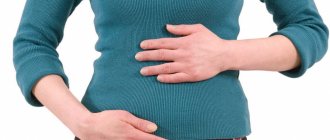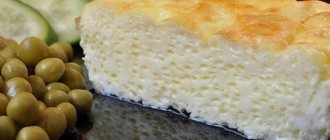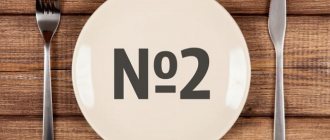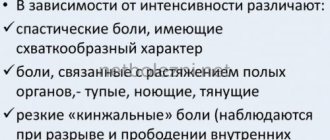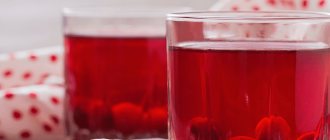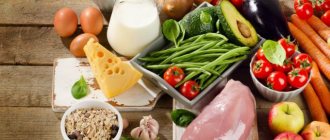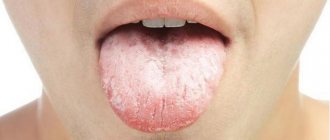Medical editor: Zemereva N.Yu., physiotherapist
Flatulence is a condition when gas formation in the intestines is increased, and the removal of gases from it is difficult. Due to increased gas production, the abdomen “swells”, which leads to pain.
Flatulence, as a rule, is only one of the symptoms of diseases of the gastrointestinal tract, so it is necessary to find out the cause of its occurrence. However, in many cases, following a diet helps to neutralize the manifestations of this pathology.
Basic Rules
The objectives of the diet for flatulence are:
- providing adequate nutrition;
- normalization of intestinal motor function;
- reducing the processes of inflammation, fermentation and putrefaction in the colon;
- exclusion of foods to which the patient has food intolerance;
- restoration of normal intestinal microflora.
First of all, therapeutic nutrition is aimed at combating putrefactive and fermentative diarrhea, during which gas formation increases.
According to the classification of treatment tables according to Pevzner, the diet for flatulence corresponds to table No. 5. But in each case, therapeutic nutrition is prescribed individually, taking into account the physiological characteristics of the patient and the presence of concomitant diseases of the digestive tract.
Daily nutrient content in the diet for flatulence:
- proteins – 110-120g
- fats – 50g;
- carbohydrates – up to 200g, especially limit simple sugars.
The energy value of the diet is reduced and amounts to 1600 kilocalories.
Principles of nutrition for flatulence:
Rules for eating
- Each meal should take place in a calm environment, snacking “on the run” is excluded. Food must be chewed thoroughly and not talking while eating: this prevents, firstly, swallowing air (aerophagia), and, secondly, reduces the load on the digestive tract.
- In addition, if you have flatulence, it is not recommended to drink during meals.
- You should also observe the hours of eating, this sets the gastrointestinal tract to work harder at certain times and prevents the production of gastric juice, pancreatic enzymes and bile acids at inopportune hours, preventing the development of complications in the gastrointestinal tract.
- It is worth giving up chewing gum: it causes aerophagia and increases the secretion of gastric juice.
Regime: Meals should be fractional, up to 5-6 times a day, in small portions. Due to frequent meals, nutrients are promptly broken down in the intestines and absorbed, and residual dietary fiber is immediately evacuated, which prevents their rotting and fermentation.
Temperature of food: Food should be served warm, hot and cold foods should be avoided as they increase the secretion of stomach and pancreatic juices, which contributes to intestinal irritation.
Combination of products: It is necessary to have an understanding of mutually exclusive products (salty and sweet, vegetable fiber and milk). Their combined use leads to increased load on the digestive tract, increased intestinal motility, and also the occurrence of fermentation processes.
Culinary treatment: Therapeutic nutrition for flatulence is designed to provide mechanical and chemical sparing of the gastrointestinal tract. Therefore, dishes are served boiled, stewed, baked or steamed.
Salt and liquid: The content of table salt in dishes is somewhat limited: up to 6-8 grams, so as not to irritate the stomach and intestines. Fluid consumption should reach at least two liters per day: this ensures timely evacuation of feces, preventing fermentation.
Nutrition for flatulence
A diet for flatulence for adults and children is necessary, since disorders in the diet are the first source of this disease. Removing gases from the intestines is very difficult, so at the first signs it is necessary to begin an intensive course of treatment and carry out preventive procedures in order to stop the further development of the disease in the early stages. It is necessary to create a competent menu.
A diet for flatulence for adults and children is necessary, since disorders in the diet are the first source of this disease
Bloating is a very unpleasant problem; its sudden onset and discomfort cannot be ignored, since at this moment the body can signal internal disorders and diseases of the gastrointestinal tract. When you have bloating, food should be balanced and initially taken in small doses. This applies to both adults and children. Only diet can eliminate the uncomfortable condition. The diet must be balanced, the products must be fresh.
Prohibited Products
The list of prohibited products for flatulence primarily includes those that increase gas formation. They are divided into three groups.
The first group is plant coarse fiber, which serves as a food substrate for intestinal microflora, enhances its growth and, accordingly, the activity of bacteria, which promotes fermentation and the formation of gases.
The second group includes simple carbohydrates, which are easily broken down in the intestines and cause rotting of food masses.
The third group includes foods that the patient cannot tolerate. Most often, such intolerance is observed in relation to milk due to insufficient production of the enzyme - lactose.
It is recommended to exclude foods that stimulate intestinal motility due to their high content of carbon dioxide and organic acids.
Protein foods of animal origin, rich in connective tissue, also linger in the intestines for a long time, as a result of which fermentation of food masses increases.
In addition, you should avoid products that contain synthetic and natural irritants to the digestive tract (essential oils, preservatives, organic acids, food additives).
The list of prohibited products includes:
- wheat and rye bread, baked goods, especially fresh;
- pasta, noodles, dumplings, dumplings, pies and other baked goods;
- fatty meats, fish and poultry, stringy meat;
- rich broths (they contain extractive substances);
- all types of sausages (due to the presence of stabilizers, flavor enhancers, soy and other additives);
- marinades and pickles;
- caviar, corned beef, salted fish, smoked meats;
- canned food;
- mushrooms in any form;
- whole milk and as part of dishes, fermented milk products (depending on tolerance);
- kvass, kumiss, beer (they contain yeast);
- carbonated drinks;
- animal fats (for example, lard, cream, sour cream, butter);
- cereals (millet, pearl barley, barley);
- legumes, any cabbage, radish, radish, raw onion, daikon, rutabaga;
- sweet fruits (apples, peaches, pears, melons, grapes) and dried fruits (raisins and prunes);
- jam, honey, chocolate;
- sauces and herbs;
- hard-boiled or fried eggs;
- nuts;
- coffee and cocoa with milk.
Nutrition for flatulence
Before starting treatment for flatulence, you must consult a doctor who will prescribe an appropriate diet that suits you. At first, its observance should not be disrupted by the interference of foreign products; it is necessary that when the abdomen is bloated, the patient follows all instructions related to the diet.
The main objectives of consuming products for flatulence include:
- providing a complete diet with essential vitamins and substances that fight disease and soothe the stomach;
- stabilization of intestinal motor function;
- reducing the likelihood of redness, irritation of the gastric mucosa, as well as rotting processes due to insufficiently complete digestion of food, preventing fermentation;
- exclusion from the diet of foods to which the patient has intolerance;
- Help in restoring the structure of the intestinal microflora, improving the general condition of the stomach.
Often, flatulence is the cause of diarrhea, especially in its protracted stages, when feelings of discomfort and heaviness in the abdomen become a regular occurrence. Increased intestinal gas formation occurs due to stagnation of poorly digested food, so therapeutic nutrition is necessary to normalize processes within the body. Its purpose is purely individual, since it depends on many characteristics of the human body.
What substances are needed for bloating at the early stage of development of the disease, and in what proportions? First of all, these are proteins (120 g), fats (50 g), carbohydrates (no more than 200 g), the daily amount of calories is 1600 per adult. This diet will help cope with the discomfort that arises.
Authorized Products
Therapeutic nutrition for flatulence primarily includes:
- products that do not stimulate gas formation;
- products that have a carminative effect.
In addition, it is necessary to eat dishes that move gently and slowly through the intestines, but do not linger in it, that is, they normalize stool and the passage of gases.
Considering the change in intestinal microflora towards the growth of putrefactive and fermentative bacteria, when preparing food it is necessary to use products that stimulate the growth of normal microorganisms. The diet should be rich in lipotropic substances that have a beneficial effect on bile and blood vessels, calcium, potassium, iron and vitamins.
The list of permitted products includes:
- dried bread, crackers made from wheat flour;
- lean meats and poultry (without skin) and steamed dishes made from them: meatballs, soufflé, steamed cutlets, meatballs;
- lean fish in whole boiled pieces or in the form of minced meat;
- low-fat weak meat and fish broths;
- pureed cottage cheese, curd soufflé, low-fat biokefir, yogurt, non-acidic sour cream (if tolerated);
- vegetables: potatoes, pumpkin, zucchini, beets, carrots;
- garden herbs: dill, parsley, as well as “dill water”;
- cumin, bay leaf;
- green tea, cocoa in water, decoctions of bird cherry, blueberry, rose hip;
- pureed and slimy porridges in water: rice, semolina, buckwheat, oatmeal;
- soft-boiled eggs and steamed protein omelettes.
Diet for flatulence rules
With increased gas formation, a mandatory point in treatment is to follow a special diet.
Nutrition should be adjusted in compliance with the following rules:
- Providing a nutritious diet;
- Normalization of intestinal motor functions;
- Reduction of inflammatory processes, fermentation and putrefaction of the colon area;
- Elimination of foods that cause intolerance;
- Eating food aimed at normalizing intestinal microflora.
For flatulence, a diet corresponding to table No. 5 is indicated. Nutrition is adjusted individually, taking into account the patient’s weight and diagnosis.
A diet for flatulence involves the right combinations of foods. Remember that there are mutually exclusive foods that cannot be eaten together. It is a combination of sweet and salty, vegetable fiber and milk. The combination of these products loads the digestive tract, enhances intestinal motility, and also enhances fermentation processes.
The therapeutic diet must ensure proper mechanical and chemical processing of products. Give preference to boiled, stewed, baked and steamed dishes.
Consequences of not following the diet
If the diet is neglected, flatulence becomes a constant companion of a person, which means that the normal intestinal microflora dies, and fermentative and putrefactive bacteria begin to become active, which release toxins in the process of vital activity.
Toxins, in turn, are absorbed into the blood and negatively affect not only the organs of the digestive tract (for example, the liver), but also the entire body.
A lack of healthy microflora will lead to hypovitaminosis, since many vitamins are synthesized by normal intestinal microorganisms (vitamin K, B vitamins).
Nutrition for intestinal flatulence, advice from doctors
The diet for bloating is based on prohibiting unhealthy foods and reducing the amount of salt and sugar in dishes. It involves limiting the consumption of fiber, starch and fructose. Food should be steamed or oven-cooked. All liquid soups, water-based porridges and meat broths are beneficial for a swollen intestine.
The following medical advice must be followed:
- the main dishes on the menu should be soups, cereals and steamed vegetables;
- It is not recommended to boil hard-boiled eggs; it is better to make baked omelettes;
- sour apples cannot be eaten fresh; they must be eaten baked;
- dishes should be stewed in a small amount of water without adding salt;
- You should drink 2-2.5 liters of still water per day;
- in case of severe flatulence, you need to stay on a rice diet for 1 day, eating boiled rice without adding salt;
- unsweetened tea with the addition of fresh mint helps with bloating;
- if you have dysbacteriosis, you need to eat more yoghurts with lactobacilli;
- You can prepare infusions of chamomile, mint, St. John's wort, drink them half a glass half an hour before meals.
The diet for bloating should be supplemented with self-massage, various exercises and walks. For severe pain, you can use a heating pad or apply a compress with a warm towel. There is no need to starve or overeat; nutrition should be correct and varied.
Results and reviews
Following a diet can reduce the manifestations of flatulence, as evidenced by patient reviews. However, as practice shows, in the presence of any gastrointestinal diseases, diet alone is not enough.
- “... The problem with flatulence arose a long time ago, which is why I often had to avoid public events. I went to a gastroenterologist, I was examined and diagnosed with colitis. After 3 months of treatment and following a diet, I got rid of my problem”;
- “... Flatulence against the background of constant constipation is a common occurrence for me. Therefore, I am constantly on a diet both for constipation and flatulence. But while I’m on a diet, after 1-2 weeks everything returns to normal, as soon as I stop it, everything appears again. It’s probably necessary to see a doctor and switch to medications in addition to the diet.”
